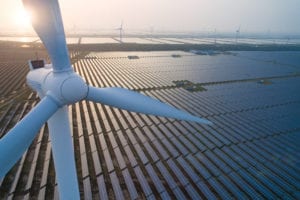Over the last century we have grown to be a disposable society – we consume and we waste. This push and pull behaviour is driven by consumer thirst, the growing middle class and cheap manufacturing distributed to mass markets.
During the last 10+ years we have seen corporations migrate towards the triple bottom line concept and deliver on their responsibility to create shared value by being economically, socially and environmentally responsible.
More recently, there is a call that the lineal economy is nearing expiry with a need to shift to a circular economy. Driven in part by rising and volatile commodity and food prices, plus the scarcity of resources, water and food; governments, economists and corporations agree that now is the time for change.
With the circular economy focused on eradicating waste by moving from a disposable model to that of one which restores and recycles, we are witnessing shifts away from a disposable society.
In this blog I want to look at this concept from the perspective of mining, cement and steel value supply chains, and how this will contribute to shaping the industrial evolution. These markets have seen significant growth over the last decade – driven by China, and other emerging economies. We’ve witnessed the coal rush, new highs in gold prices and a behavior of producing at any cost. This can no longer be sustained.
So what will happen when efficiency gains are exhausted? How can companies remain competitive and continue to deliver healthy returns to stakeholders, while at the same time delivering shared value to the communities in which they operate?
I believe part of the answer is by generating top-line growth through extending the value chain. The concept of value chain extension has been discussed forever. But how long can the chain be in any given industry or business? What components will actually add value to a company and its customers? What is the cost-benefit of unifying not only components of one’s own value chain, but also from sub-suppliers?
For cement and mining processes, these are vertically integrated. For some time cement companies have extended their value chain to manufacturing concrete and even pre-molded elements. How much further can they go towards creating value for themselves and their customers?
Many mining companies, in some commodities, have focused purely on digging and shipping – this is unlikely to be enough for the future. Some mining companies have ventured into steel manufacturing, even refining and smelting, and we now see aluminum as a vertically integrated industry too. Others have ventured into the logistics of trains and ships. Out of China, coal gasification is part of the coal mining company’s value chain.
In the case of steel, companies have extended their value chain backwards by becoming iron ore miners, and forwards to produce finished products and deliver services.
All of this extended value needs to be defined in the context of adding value for shareholders and customers – positive top and bottom lines. This will call for business models and strategies to be significantly changed.
Extending the value chain in the context of value creation, and/or optimizing it, will also see the creation of new partnerships – companies will need to create strategic partnerships with suppliers and, in some cases, even competitors. This journey will not be one which can be taken alone.
Taking all of this into context, four key areas are shaping the business models for cement, mining and steel companies:
- The circular economy
- Technological industrial evolution
- Shared values
- Value chain extension
Companies which find the ideal evolution (Figure 1) and balance the four drivers will come out as leaders in their markets. Using technology and innovation to identify value chain extension and drive economic value will require a balance of strategies that identify new business opportunities.
Do you think value chain extension and the circular economy is the answer to put the world back on the path of growth and sustainability, and return mining, cement and steel companies back to triple bottom line prosperity? How will this drive innovation and faster adaption of technology? Are these strategies being discussed within your business?




Conversation
Diego,
Well done, I absolutely agree with your comments. The world is in disperate need of transformational change, from the linear economy. The only force powerful enough to make that change is business. Governments have tried and failed. We need to provide industry with the thinking, tools and guidance to support that transition.
I call this new way of thinking, Circularity. I believe there are three key trends that are now converging to assist. The internet of things (IOT)is really about putting the rest of the planet on the internet. If you can’t measure it, you can’t manage it. Next is collaborative consumption(CC), this will drive higher utilisation by changing mindsets from ‘own’ to ‘use’. Finally circular economy(CE), to redesign business models, processes and value chains towards zero waste.
These three can enable and support that transition, by how we manage (IOT), consume (CC) and design (CE) the businesses of tomorrow.
I am looking to gain support from my management team to work with Schnieder and other thought leaders to drive this transition. I would be excited to work with you to make that happen.
P.S. I was in your presentation at Synergy of the Gold Coast, can you please send a copy of your presentation. I would like to forward to our Executive team. Yong The has been working with Ajilon to partner, I’d like to put this on the agenda. I’d be interested to hear your thoughts on how.
Regards,
Brad